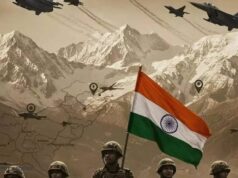Pak cries foul as India purchases American Armed drones with hard cash

The firepower of the Indian military is increasing rapidly with indigenously developed weapon systems and equipment.
However since much larger numbers are required to be deployed in view of the Tibetan Frontier presently under Chinese Occupation, few gap fillers are also getting imported from Russia, France, Israel and USA.
Thus purchase and transfer of American military jet engine technology and equipment is there to ensure that the Tejas fighters keep taking to the sky in large numbers before switching to the own indigenous Kaveri engine.
Similarly armed surveillance drones are being purchased to act as gap fillers till state of art Indian drones are fully matured. S400 air defence systems from Russia have already been deployed to cover the most critical areas and now Indian systems have begun to strengthened the missile defence cover.
Pakis are now not even a blip on the Indian strategic planning radar. However this major transformation of Indian capabilities is having the Paki Policy makers in a tizzy. They are still trying to equate their country with rising economic and military power of India.
Pakistani defence policymakers are still howling to equip their armed forces with state-of-the-art weapon systems to sustain the so called strategic equilibrium between the two. This is despite the enormous gap between the defence budgets of the two countries and Pakis economic fragility. Nevertheless, this action-reaction of Pakis for matching the ugly strategic stability with India seems to have no end.
On February 2, Washington finally decided to sell $4 billion worth of the most advanced Predator drones built by General Atomics to New Delhi. India’s armed forces purchased 31 MQ-9B Sky Guardians as gap fillers for the Indian Air Force, eight for the Army, and fifteen Sea Guardian drones for the Indian Navy. These drones will improve India’s capability to meet current threats by enabling unmanned surveillance and reconnaissance patrols in sea lanes of operation, till Indian made state of art drones start entering operational service in required numbers.
China and its like-minded littoral friends of the Indian Ocean are sensitive to India’s blue water Navy build-up with indigenous ships and systems as well as from Russia, France, Israel and now some from the USA as well.
However the Pakistanis are still considering India’s military improvement a direct threat to its national security. They better realize that they can no more adopt a balancing strategy with India.
The transformation of international geopolitics has increased strategic cooperation between India and many other countries. India is becoming a net security provider in the Indian Ocean region, and also is helping out the Americans’ in their Indo-Pacific strategy.
USA has been trying its level best to become a major defence partner of India since 2016; Washington has managed to sell advanced weaponry, including new emerging technologies, to India in recent years.
The Sea Guardians drones can monitor the seas and submarines, remain airborne for 35 hours at a time, fire hellfire missiles, and carry around 450 kg of bombs.
Moreover, to increase its naval capability, India is also likely to purchase six more Boeing P-8I long-range maritime patrol aircraft from the US.
These will supplement 12 P-8I Poseidon aircraft that the Indian Navy already operates. These weapons increase the Indian Navy’s coverage area in the Indian Ocean region.
Now Pakistan too wants to acquire more advanced ships and submarines, modernize its air force, and invest more in fabricating and integrating emerging technologies to solidify its defensive fence.




